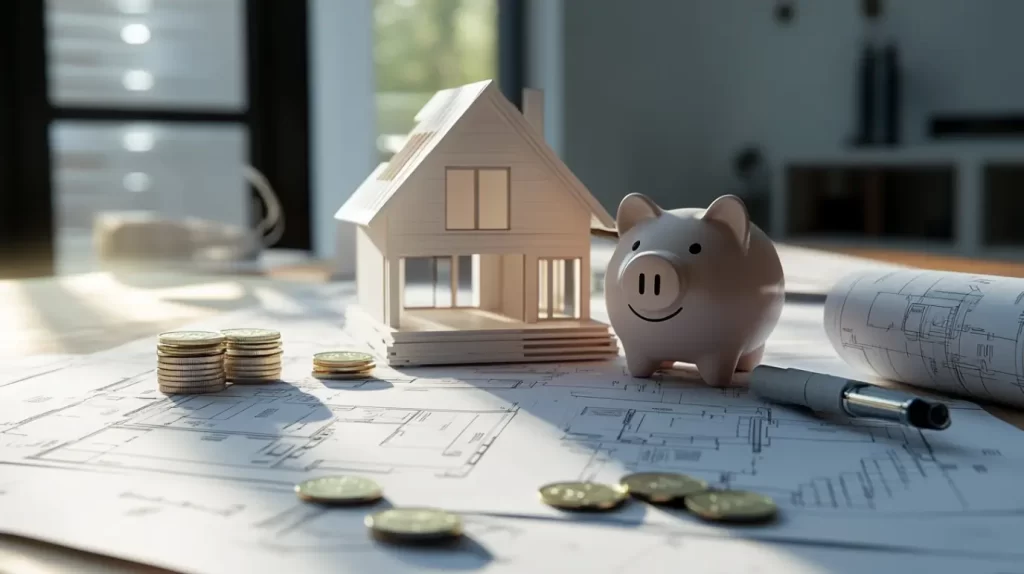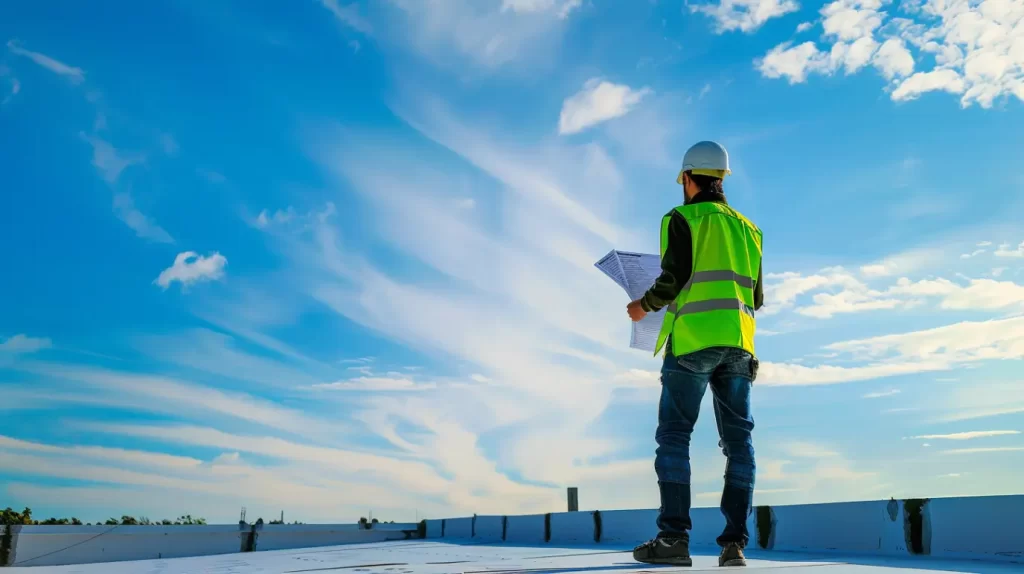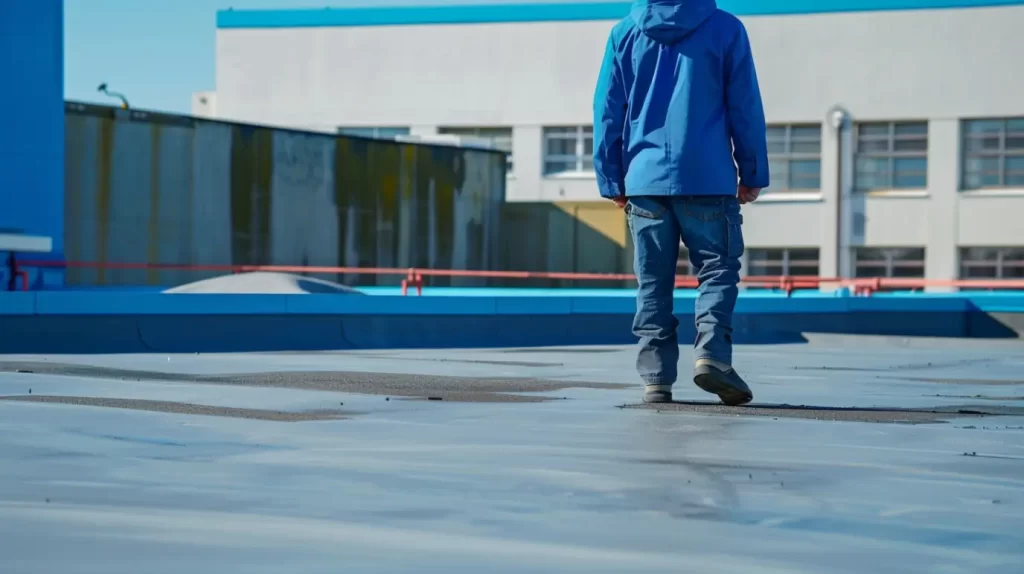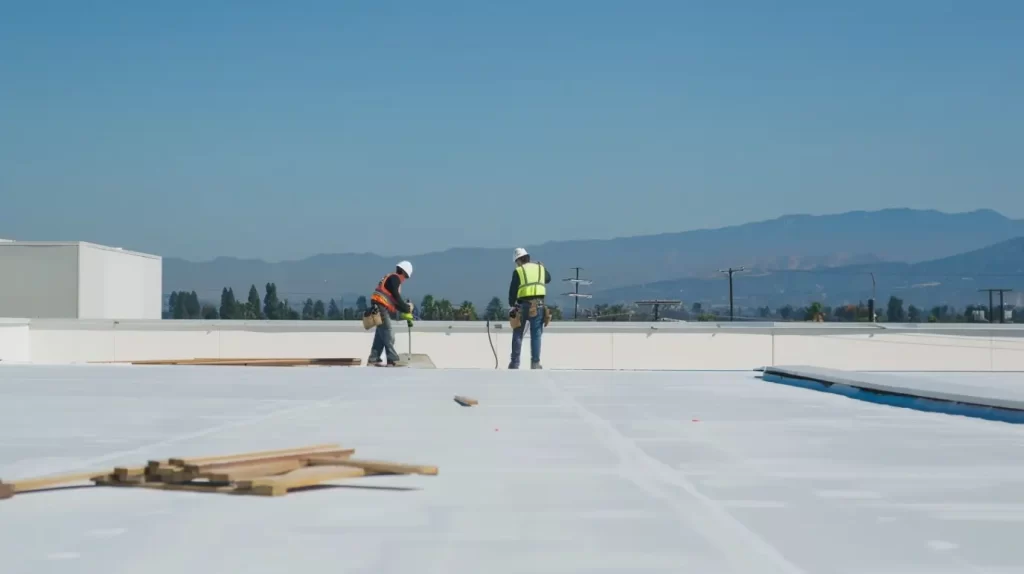Managing roof replacements for large portfolios in Anaheim, CA, is a crucial step for property managers and HOAs. With multiple commercial or multifamily buildings, having a solid plan is essential. Roof replacement is a significant investment that involves selecting the right materials and budgeting effectively. At Fontaine Roofing, we understand the challenges of managing large-scale replacements. Our expert assistance helps you make informed choices to maintain your property, extend the roof’s lifespan, and ensure peace of mind.
Key Considerations When Planning Roof Replacement for Large Property Portfolios
Property managers overseeing a portfolio must tailor solutions to each building’s needs. The timing and choice of roof replacement impact cost efficiency and long-term property protection. Collaborating with skilled roofing professionals can provide insights into each building’s roof lifespan. Proper planning for roofing projects can enhance the overall portfolio value.
Given the many factors influencing decisions, careful planning and expert assistance are crucial for roof replacements across your portfolio. Read on to discover how to assess your roofing needs and strategize effectively.
Contact Us
Assessing Portfolio-Wide Roofing Needs
A thorough evaluation of your roofing needs ensures that capital expenditures align with current conditions and sustainability goals. Engaging roofing professionals for regular inspections can identify small issues before they escalate, facilitating informed decisions on repairs or replacements. Analyzing different building types and their roofing systems helps property owners determine specific requirements, emphasizing the selection of appropriate materials and long-term maintenance patterns. Ultimately, a strategic assessment allows stakeholders to optimize roofing investments, reduce unforeseen expenses, and ensure peace of mind.
Evaluating Different Building Types and Roof Structures
Understanding the unique requirements of various building types and roof structures is crucial for effective capital planning in roof replacement projects. Each property presents distinct challenges that influence costs, such as size, layout, and materials. For instance, flat-roofed commercial buildings need a different approach than multifamily structures with sloped roofs, affecting material selection and installation methods. Engaging roofing experts can pinpoint each property’s specific needs. Addressing these variations early in planning minimizes potential issues, enhances energy efficiency, and supports informed material choices aligned with long-term budget goals.

Major Factors Impacting Roof Replacement Costs
Replacement costs for commercial and multifamily properties vary based on roofing materials, labor, size, and complexity. Hiring experienced contractors ensures accurate cost estimates and quality work. Our certifications, including GAF Master Elite Contractor and CertainTeed Shingle Master, showcase our commitment to excellence. We are also approved applicators for FiberTite and IB Roofing Systems. Our TRI certification and memberships in CACM, CAI, and NRCA underscore our dedication to high roofing standards. Regional factors like climate and regulations impact costs; addressing these early helps create a realistic budget without surprises.
Material Choices for Commercial and Multifamily Properties
Choosing the right materials for commercial and multifamily roofs impacts replacement costs. Options include cost-effective asphalt shingles, energy-efficient metal roofing, and innovative solar shingles. Assessing installation processes and maintenance needs can prevent unexpected expenses. While premium materials may have higher upfront costs, they often yield significant energy savings and require less frequent replacement, aiding capital planning. Collaborating with experienced roofing professionals ensures informed decisions that balance quality and budget while considering long-term effects. Regular inspections and maintenance protect against structural damage, underscoring the importance of material selection over time.
Size, Layout, and Accessibility of Roofs Across Buildings
Evaluating roof size, layout, and accessibility is crucial for effective replacement planning. Larger roofs require special attention due to higher material and labor costs. Understanding each building’s unique features—slopes, edges, and drainage—is vital for proper installation and to prevent structural damage.
Accessibility significantly influences costs; hard-to-reach roofs may need more equipment and labor. Regular inspections can catch minor issues before they escalate into costly problems, affecting the overall roofing project budget. By considering these factors, property owners can make informed decisions that enhance long-term capital planning and investment across their portfolios.
Local Climate and Regulatory Requirements in the United States
Local climate and regulations significantly impact roofing project planning and costs. In Anaheim, CA, building codes require specific materials and procedures for safety and energy efficiency. Weather conditions—like heavy rain, high winds, or intense sunlight—can also affect your roof’s lifespan, so choose materials wisely. Compliance with state and national laws, including permits and energy efficiency standards, may raise costs. Experienced roofing contractors can help navigate these regulations. For property owners, understanding these factors is essential for effective capital planning and ensuring smooth project completion without compliance issues or delays.

Strategies for Accurate Cost Estimation Across Multiple Properties
Effective cost estimation for roof replacement across your entire portfolio starts with a full check of the roofs and collecting good data. Finding potential issues early will help property owners plan for capital expenditures with peace of mind. If you get a professional roofing contractor to do regular inspections and use up-to-date technology, you can estimate costs more accurately.
Standardizing Inspection Methods and Data Collection
Standardized inspection methods improve assessment reliability for property portfolios. By adopting these protocols, commercial property owners can effectively monitor roof conditions and make informed maintenance or replacement decisions. Advanced data collection techniques, like digital imaging and drone surveys, allow for thorough evaluations of roofing systems, identifying issues such as structural damage or wind wear. A centralized database for inspection results streamlines reporting and analysis, offering a clear overview of each roof’s performance. This approach helps identify trends, anticipate maintenance needs, and enhance energy efficiency, ultimately leading to better capital planning and reduced replacement costs.
Leveraging Technology and Roofing Management Software
In today’s commercial property market, roofing management software enhances operational efficiency. These tools help property owners streamline projects, from scheduling inspections to managing costs. With real-time data analytics, roofing professionals can assess conditions, track maintenance, and forecast replacement costs. Advanced software improves decision-making by providing insights into material lifespan and aids in capital planning, allowing for wise resource allocation and reduced unexpected expenses. Ultimately, roofing management software optimizes installation processes, ensures roof longevity, and boosts energy savings and property value.

Creating a Scalable Budget Plan for Portfolio Roof Replacements
Creating a budget for roof replacement requires strategic capital planning and careful reserve allocation. Property managers should group projects to secure volume discounts and enhance efficiency. Phased budgeting aligns costs with long-term goals, reducing replacement expenses and providing peace of mind.
A solid budget plan offers property owners clarity and flexibility, enabling them to adapt to market changes and address potential issues during the roofing project. Effective capital planning also streamlines the process for property owners.
Grouping Projects for Volume Discounts and Efficiency
Combining roof replacement projects can yield significant discounts and efficiencies. Partnering with a reputable contractor allows commercial property owners to negotiate better rates based on the collective scope of work, reducing costs and simplifying logistics while minimizing disruptions.
Grouping projects also streamlines scheduling and resource allocation. Roofing professionals can efficiently mobilize labor and materials, ensuring timely completion without sacrificing quality. This strategy enhances energy efficiency through uniform standards and maximizes long-term return on investment.
Phased Budgeting and Reserve Allocation
A phased budgeting strategy allows commercial property owners to allocate resources effectively for roof replacements. By segmenting expenses, owners can manage capital expenditures and improve cash flow. This approach aids in selecting roofing materials that align with budget, lifespan, and energy efficiency.
Reserve allocation is crucial for unforeseen installation costs. Regular inspections identify potential issues early, enabling proactive funding for repairs. With a solid plan, property owners can confidently address immediate needs and long-term roofing requirements.

Spotting and Preventing Hidden Roof Costs
Hidden roof replacement costs can derail your plans. Unexpected expenses, such as removing an old roof, choosing between overlay or full replacement, and paying for permits or environmental compliance, may arise. Collaborating with skilled contractors helps you anticipate these issues and avoid budgetary mistakes.
Understanding hidden costs enables better capital planning and safeguards your finances against unexpected roof replacement expenses.
Tear-Off vs. Overlay Decisions
Choosing between a tear-off or overlay for roof replacement is crucial for commercial property owners. A tear-off removes existing materials, allowing for fresh installation that can address underlying issues like structural damage and moisture infiltration, enhancing adherence, long-term performance, and energy efficiency.
Conversely, an overlay provides a cost-effective solution by installing over the old roof, especially for larger buildings. However, it’s essential to consider local building codes and the condition of the existing roof. Making an informed choice can significantly impact costs and the longevity of your roofing investment.
Permit, Code, and Environmental Compliance Expenses
Roof replacement projects can be costly due to permits, building codes, and environmental regulations. Commercial property owners must navigate complex local requirements enforced by authorities. Compliance is crucial for legal adherence and quality workmanship, helping to avoid potential issues.
Engaging roofing professionals early aids informed decision-making about necessary permits. Additionally, understanding costs for environmental compliance—such as energy-efficient materials like solar shingles—can prevent unexpected expenses. Capital planning should account for these factors to accurately estimate overall project costs, ensuring peace of mind during installation.

Portfolio Roofing Budget Optimization
Strategic lifecycle cost planning is essential for commercial property owners to optimize roofing budgets. This approach projects maintenance and replacement schedules, enabling informed capital expenditure decisions. Assessing roof lifespans forecasts repair costs and establishes tailored service timelines. Preventive maintenance enhances energy efficiency and resolves deferred maintenance issues. By evaluating the cost-benefit of regular inspections and quality workmanship, property owners can reduce unexpected expenses from complex roofing projects, boosting profitability while ensuring optimal roof performance throughout their lifespans.
Projecting Long-Term Maintenance and Replacement Schedules
Effective roof portfolio management entails projecting maintenance and replacement schedules. By anticipating material lifespans—such as asphalt shingles or metal roofing—property owners can align timelines with capital planning. Regular inspections by roofing professionals identify minor issues before they become costly repairs, ensuring quality workmanship and energy efficiency. Routine maintenance not only extends roof lifespan but also aids in budgeting for unexpected expenses. Understanding each building’s specific needs enables informed decisions that minimize replacement costs and enhance profitability. This proactive strategy includes scheduled maintenance and major replacements, protecting the entire investment portfolio.
Analyzing Cost-Benefit of Preventive Maintenance Programs
Preventive maintenance programs are essential for managing roofing costs. Regular inspections can extend a roof’s lifespan, helping property owners avoid costly replacements. Addressing minor issues early reduces repair costs and unexpected expenses. Evaluating the cost-benefit ratio enables informed spending decisions for commercial property owners. Investing in quality materials and workmanship improves energy efficiency, leading to long-term savings. Hiring qualified roofing professionals ensures compliance with codes and meets each building’s unique needs.
Connect With Us
To manage roof replacement costs for larger properties, careful planning is essential. Assess each building’s needs, create a clear budget, and identify potential hidden costs early on. Utilizing effective methods and advanced technology can reduce expenses while maintaining high standards, ensuring a swift and cost-effective replacement. Fontaine Roofing is your trusted partner for commercial roofing projects in Anaheim, CA, committed to keeping your buildings safe and efficient. Contact us today to discuss how we can simplify your roof replacement and manage hidden costs.
Read our blog: Common Roofing Issues in Aging Condominium Complexes
Frequently Asked Questions
How does regular roof maintenance help reduce long-term costs?
Routine maintenance catches small issues early, reducing repair costs and extending roof life. Roofing professionals ensure your roof remains in good condition, lowering the risk of early replacement and preventing costly emergency repairs.
Is it better to replace roofs proactively or wait until they fail across a portfolio?
Proactive replacement helps stop structural damage before it starts. It also boosts energy efficiency and helps the roofing system work better for the entire portfolio. If you wait until things break, costs will go up. You can have bigger problems and more issues for people who live or work on the property, as well as for managers.

